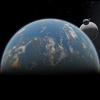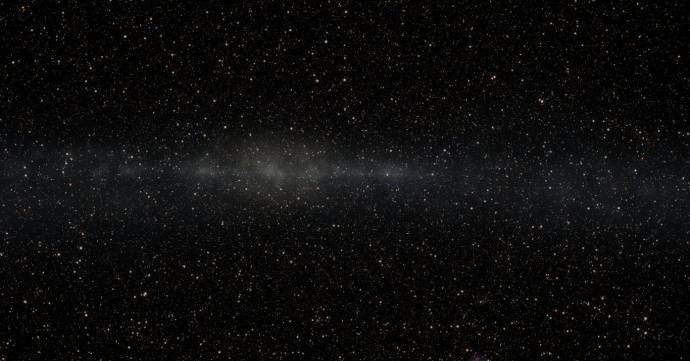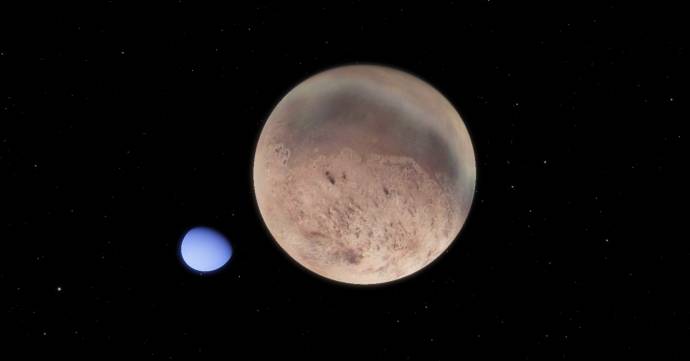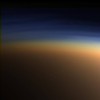| GameOver | Date: Sunday, 30.10.2011, 19:18 | Message # 1 |
 Space Tourist
Group: Users
 Brazil
Brazil
Messages: 30
Status: Offline
| Well, hello everyone, I's my first post in the forum, and also my first thread. And, most importantly, I believe my english sucks, so please be patient :P
So, I discovered this program some weeks ago and then started to announce it to everybody in Orkut (the biggest brazilian social network, after Facebook), and showed some pictures of the game in an astronomy forum. One of the guys then started to tell the errors he found, and ever since I think the program is almost perfect as it is, I had to come here and post the feedback from them.
So... I translated the portuguese text (or at least I've tried to):
Quote I'ts full of errors. A great initiative, but it's just the first step. The program still needs many corrections. The proportion of different magnitude stars is wrong. The textures in solid surfaces are wrong, and so are in the fluids. The nebulosity inside nebulas is wrong, and so are bright and color. All the images are unreal, not because we don't know the real data, but because simulation is failing in many aspects. Too bad... Anyway, it's a colossal work, and it would be a much bigger work to make it more realistic. Maybe a team could make it, but not a single person. http://lh3.ggpht.com/-zLA3Kr....003.jpg The amount of bright stars is disproportionately big. In a universe with low anisotropy, almost homogeneous, it's expected that in any region the observer is, the star distribution would be aproximately uniform. If the luminosity distribution just follows the H-R diagram, or if it was uniform, too, the result would be similar, but having a bigger variance in the H-R case and a soft assimetry, with a dense tail in the inferior extremity (note: I don't really know what he's talking about). That makes the quantity of less bright stars bigger than the brighter stars, considering any bright level, and any observer location (generic locations, but there might be very rare points where this rule doesn't apply). In the picture it's grossly incorrect. There's much uniformity in the stars bright, and we can notice a bright star predominance. I didn't quantitatively analyze the color proportion, but it's possible to be wrong too, with blue and other hot stars excess. There's nowhere in the universe (or maybe very few places) where the sky would have this aspect. http://lh6.ggpht.com/-NL5gIP....007.jpg Unles you are in the center of a galaxy or a big globular cluster, there wouldn't be so many bright stars next to a planetary-sized disc. Let's postulate the planet have the angular size of the Moon, or even 10 times bigger. The quantity of bright stars around would be very small, maybe 4 or 5 in a 5 degrees field. And it they were low-bright stars, again the planet would appear intensely shining or exloding in white. Try to look at the moon in the sky and the amount of near bright stars. This presentation is totally unreal. There are very few regions in space with this star density, and even so, there would be the different bright level proportion problem, which is wrong, too. http://lh6.ggpht.com/-L24iss....817.jpg This one looks like a representation of Triton's Surface. Neptune is okay because the image is real. We don't have near pictures of Triton, but we can represent it as a fractal. The surface is exessively euclidian, we can clearly realize it's artificial. Look at this fractal: http://lh5.ggpht.com/-Plv6Gx....8_b.jpg In a first sight, it looks like a real world, with texture, tonalities and shadow gradient. But it's not correctly coloured yet. That's the way to have appropriate representations of real objects (give or take), so it won't look like a cartoon. There are some artistic representations in the book "Cosmos" which are very good, but they were handmade and wouldn't work in this case. The program needs equations with formation laws to multifractal generation. The more equations it have at disposal, the bigger will be the scenarios variery it can create, aht the closer to real planets the aspect will be. Continents and clouds are fractal too, but in the program images they are euclidian.
I'm just starting my physics graduation, so there are many things in his text I don't know yet. If the program really has these problems, why I didn't see anyone else appointing these? And also, is there any explanation for these so-called "errors"?
Thanks for the answers, and I'm crazy in expectations for the next version of Space Engine! And... good job, Romanuk, You are the man! 
Core 2 Duo E7500 2.93GHz; 2GB RAM; GeForce 9800 GT 512 MB VRAM
|
| |
| |
| Freak2121 | Date: Sunday, 30.10.2011, 20:06 | Message # 2 |
 Space Pilot
Group: Users
 Canada
Canada
Messages: 89
Status: Offline
| Their problems regarding too many stars on screen can be fixed by turning on auto exposure or editing the exposure settings themselves. :|
Intel Core i5 @ 4.534GHz
8GBs of DDR3 RAM @ 1600mhz
EVGA GTX970 SSC
Windows 7 64-bit
|
| |
| |
| SpaceEngineer | Date: Sunday, 30.10.2011, 22:16 | Message # 3 |
 Author of Space Engine
Group: Administrators
 Russian Federation
Russian Federation
Messages: 4800
Status: Offline
| Firstly, tell him thanks for his criticism. This is the very first estimation of SE made by an astronomer! Secondly, tell him that I am an astronomer too, and know all these issues very well. Thirdly, here are my answers:
1) It seems that this picture is not common in SE, or he has used an old version with simple star generation algorithm. Look at this screen from SE 0.95:

Note that SE uses logarithmic scale of star sprites, to better utilize lack of dynamic range on common PC monitors.
The star density in spiral arms of the Milky Way is normalized to star density in the Sun neighboorhood, taken from HIPPARCOS catalog.
2) First, SE uses a default FOV of 60 degrees. If you want to look at your monitor like a window, you may calculate proper FOV yourself (arctan of height divided by distance), it is about 10-20 degrees. Second, turn on the auto-exposure - it removes stars near the planet's disk. Then you can increase the exposure to see the stars again, but planet becomes over saturated in white.
BTW, current versions of SE does not calculate real brightness of a planetary surface - the lighting value is normalized before each planet rendering. So Earth has the same surface brightness as Saturn. It will be fixed in next version, when proper image-based auto-exposure will be implemented. For this reason nebulae and Milky Way are overly bright too.
3) This is not a Triton, but probably one of its small moons, that has no real textures defined. Triton has a real texture with no elevation data:

I work intensively on fractal generation algorithms. For example, today I made rayed craters and canyons. Procedural surface geneation is one of the most important features in SE, and I will keep developing them!
*

|
| |
| |
| JHill | Date: Sunday, 30.10.2011, 23:49 | Message # 4 |
 Observer
Group: Users
 United States
United States
Messages: 19
Status: Offline
| Constructive criticism I say, however, some issues are unavoidable
Sed nos soli stantes. Solus stamus unita.
In multis unum surgimus. Sub una resurgemus totidem.
|
| |
| |
| Talisman | Date: Monday, 31.10.2011, 00:15 | Message # 5 |
 Pioneer
Group: Users
 United States
United States
Messages: 409
Status: Offline
| The exposure settings are configurable so that shouldn't be an issue for him. Still a lot of constructive criticism.

|
| |
| |
| GameOver | Date: Monday, 07.11.2011, 02:05 | Message # 6 |
 Space Tourist
Group: Users
 Brazil
Brazil
Messages: 30
Status: Offline
| I can see SE getting better and better everyday... Well, this "fractal-stuff" looks like something really important, looks like you guys put much importance on that aspect 
Core 2 Duo E7500 2.93GHz; 2GB RAM; GeForce 9800 GT 512 MB VRAM
|
| |
| |